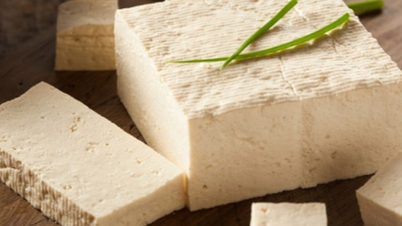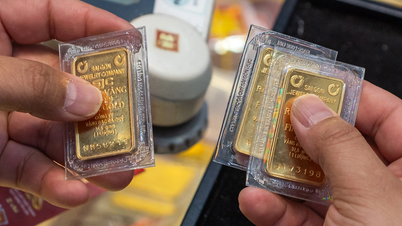
Observe the colors
The color of naturally ripened mangoes is often uneven. On the same mango, you can see a mixture of green, yellow and sometimes a little red. This color variation is the result of the gradual ripening process under the influence of sunlight and temperature.
Meanwhile, the color of chemically ripened mangoes is often very uniform and eye-catching, often bright yellow throughout the fruit. Chemicals ripen quickly and evenly without the need for natural exposure to light.
Naturally ripe mango skin is usually plump, and may have a few small bruises or slight cracks. The surface of the mango skin is not too shiny but has a slight roughness.
Chemically ripened mangoes are often shinier due to the softening and brightening effects of the chemicals. The surface of the fruit is also less prone to cracking or bruising than naturally ripened mangoes.
Check the stem
Mango stem is also an important sign to assess the freshness of the fruit, helping to identify whether the mango is chemically ripened or naturally ripened.
Naturally ripened mangoes usually have fresh, firm green stems. The stems are raised, swollen and bright green. When you smell them, you can feel the characteristic aroma of mangoes.
On the contrary, chemically ripened mangoes usually have stems that are not raised or swollen. The scent from the stem is weak or absent because the mango is not fully ripened from the inside. A stem that smells of chemicals or has no scent is a sign to avoid.
Odor check
Naturally ripened mangoes have a sweet, mild aroma that is characteristic of this fruit. This aroma emanates from the peel and the riper the mango, the stronger the aroma.
Chemically ripened mangoes often lack their natural scent or have a very faint scent, not as sweet and rich as naturally ripened mangoes. Sometimes, if you smell closely, you can detect a strange chemical smell.
Test with water
When artificially ripened, mangoes will float on the surface of the water. So, put the mango in a bucket of water after buying it to check if it is organic or not.
Taste test
You can taste the flavor to check the freshness, identify the mango ripened by chemicals or ripened naturally. Naturally ripened mango has a sweet, rich taste and blends with natural aroma. This flavor is very difficult to confuse with any other fruit.
Meanwhile, chemically ripened mangoes often have a bland taste, are not rich and lack the harmony of natural flavors. Sometimes you can taste bitterness or strange flavors due to the residual chemicals.
Try the match
While this test is best done with extreme safety in mind, you can light a match and hold it close to a mango. If the fruit catches fire or sparkles, know that it has been ripened with the chemical calcium carbide.
How to remove chemicals from mangoes?
The simplest and most effective method is to rinse thoroughly under running water and soak the fruit in a vinegar water solution for about 15 minutes.
Another way is, you can use baking soda and water to soak the mango for at least 15 minutes and then rinse to remove chemical residue.
Source: https://kinhtedothi.vn/bat-mi-cach-nhan-biet-xoai-chin-bang-hoa-chat-hay-tu-nhien.html



![[Photo] Panorama of the cable-stayed bridge, the final bottleneck of the Ben Luc-Long Thanh expressway](https://vphoto.vietnam.vn/thumb/1200x675/vietnam/resource/IMAGE/2025/9/30/391fdf21025541d6b2f092e49a17243f)

![[Photo] President Luong Cuong receives President of the Cuban National Assembly Esteban Lazo Hernandez](https://vphoto.vietnam.vn/thumb/1200x675/vietnam/resource/IMAGE/2025/9/30/4d38932911c24f6ea1936252bd5427fa)

![[Photo] The 1st Congress of Phu Tho Provincial Party Committee, term 2025-2030](https://vphoto.vietnam.vn/thumb/1200x675/vietnam/resource/IMAGE/2025/9/30/1507da06216649bba8a1ce6251816820)


























![[Photo] Solemn opening of the 12th Military Party Congress for the 2025-2030 term](https://vphoto.vietnam.vn/thumb/1200x675/vietnam/resource/IMAGE/2025/9/30/2cd383b3130d41a1a4b5ace0d5eb989d)


































































Comment (0)